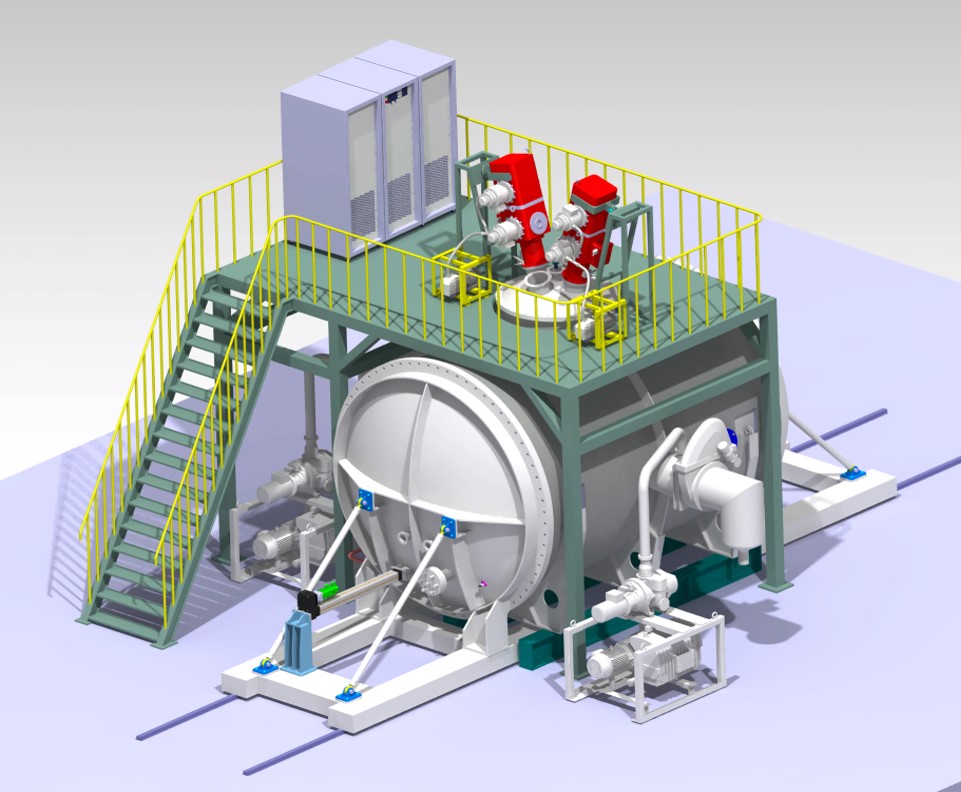Speaker
Description
To support the R&D of China Fusion Engineering Test Reactor (CFETR) $^1$, a Comprehensive Research Facility for Fusion Technology (CRAFT) program has been launched at the Institute of Plasma Physics, Chinese Academy of Sciences (ASIPP). Within the CRAFT program, a divertor material/component testing project is authorized to address some key R&D issues of plasma-facing materials and components for CFETR in appropriate physical regimes, size and time scales of plasma-material interactions. This project includes two user-facilities, i.e., a large linear plasma machine (Fig. 1) and a high heat flux (HHF) test device (Fig. 2), which will provide new research opportunities for users in the whole PMI research community. The project started from September 2019 and is scheduled to be completed in 2025.


The linear plasma facility employing superconducting-magnets has been designed to deliver intense plasma streams with >1×10$^{24}$ m$^{-2}$s$^{-1}$ particle flux. A modified cascaded arc source has been selected to produce the high-density plasma and the magnetic field strength at the source center is >3 T. The baseline plasma diagnostics include Thomson scattering, emission spectrum and target probes. In-situ tools for material analysis like laser-induced breakdown spectroscopy (LIBS), ion beam analysis (IBA) and thermal desorption spectroscopy (TDS) will be installed.
The high heat flux test facility is equipped with two electron beam guns (60 kW@120 kV and 800 kW@60 kV). The 60-kW gun is used for transient heat loading while the 800 kW one is used for steady-state experiment. The maximum scanning area of the target components is ~1 m$^{2}$. This HHF facility is connected to high temperature high pressure water and helium loops, making it capable of investigating the performance of water and helium-cooled PFCs under CFETR-relevant conditions.
At present, conceptual design and machine design phases of the facilities have been finished and two prototype machines have been built. A prototype linear plasma machine (Fig. 3) employing conventional water-cooled magnets has been constructed. The linear device can maintain a steady-state magnetic field strength of ~0.7 T and test various new high-density plasma sources with particle flux up to 10$^{23}$-10$^{24}$ m$^{-2}$s$^{-1}$. After finishing the source evaluation missions, this machine will be modified into a PMI research station by connecting an additional target chamber. The main research topics include hydrogen isotope permeation $^2$, retention and material surface modification under extremely high particle fluxes. Another pilot HHF device (Fig. 4) equipped with a 100-kW electron gun is built to qualify new EAST PFCs $^3$ and test relevant HHF instrumentations.


Reference
1. G. Zhuang et al., Nucl. Fusion 59 (2019) 112010.
2. Hai-Shan Zhou et al., Nucl. Fusion 59 (2019) 014003.
3. G.-N. Luo et al., Nucl. Fusion 57 (2017) 065001.
| Affiliation | Institute of Plasma Physics, Chinese Academy of Sciences |
|---|---|
| Country or International Organization | China |
